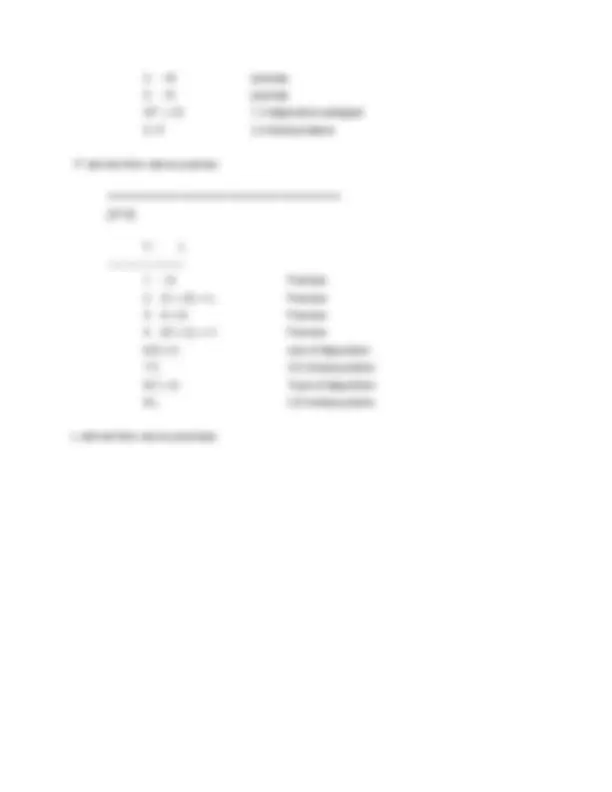



Study with the several resources on Docsity

Earn points by helping other students or get them with a premium plan


Prepare for your exams
Study with the several resources on Docsity

Earn points to download
Earn points by helping other students or get them with a premium plan
Community
Ask the community for help and clear up your study doubts
Discover the best universities in your country according to Docsity users
Free resources
Download our free guides on studying techniques, anxiety management strategies, and thesis advice from Docsity tutors
Introduction to Logic. Logic is the study of the criteria used in evaluating inferences or arguments. An inference is a process of reasoning in which a new belief is formed on the basis of or in virtue of evidence or proof supposedly provided by other beliefs.
Typology: Exercises
1 / 3

This page cannot be seen from the preview
Don't miss anything!


Exercise 37 ... (For-Credit of 10 Points) (based on Textbook Exercises, 4-2 & 4-5) Derive the conclusions from the premises in the arguments below by utilizing inference rules: ====================================== [37-1] C: G
1: ~M Premise 2: N -> G Premise 3: N v M Premise 4:N Disjunctive syllogism 5:G Modus ponens G being derived from the above premises ====================================== [37-2] C: D
1: ~G -> (A v B) Premise 2: ~B Premise 3: A -> D Premise 4: ~G Premise 5:A v B 1,4 modus ponens 6:A 2,5 Disjunctive syllogism 7:D 3,6 Modus ponens D Derived from above premises ======================================
1: A -> (B -> C) Premise 2: ~C Premise 3: ~D -> A Premise 4: C V ~D Premise 5: ~D 2,4 disjunctive syllogism 6:A 3,5 Modus ponens 7:B -> C 1,6 modus ponens 8: ~B 2,7 Modus tollens ~B derived from above premises ====================================== [37-4] C: D & E
1: A -> (~B & C) Premise 2: C -> D Premise 3: E v B Premise 4: A Premise 5:~B & C 1,4 modus ponens 6:c rule of conjunction 7:~B 5, rule of conjunction 8:D 2,6 modus ponens 9:E 3,7 Disjunctive syllogism 10:D & E 8,9 rule of conjunction D & E derived from above premise ====================================== [37-5] C: ~F
1: (F -> G) v H premise